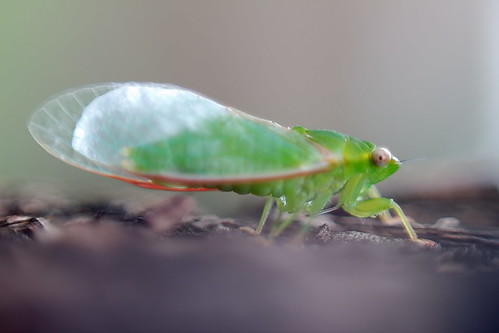TWO VERSIONS OF A FABLE
THAT MAY CAUSE YOU TO PAUSE AND THINK
(or at least give you a chuckle)
AESOP'S VERSION:
One summer's day a Grasshopper was hopping about, chirping and singing to its heart's content. An Ant passed by, bearing along with great toil an ear of corn he was taking to his den.
"Come and chat with me," said the Grasshopper, “We can play the fiddle and sing and dance!"

“Oh no,” said the ant. “Winter is coming. I am storing up food. I think you should do the same.”
“Oh, I can’t be bothered,” said the grasshopper. “Winter is a long time off. There is plenty of food.” So the grasshopper continued to dance and sing and the ant continued to work.
When the winter came the Grasshopper had no food and found itself dying of hunger, while it saw the ants distributing every day corn and grain from the stores they had collected in the summer. Then the Grasshopper knew:
It is best to prepare for the days of necessity.
MODERN DAY VERSION (Found circulating the world wide web) :
The ant works hard in the withering heat all summer long, building his house and laying up supplies for the winter. The grasshopper thinks the ant is a fool and laughs and dances and plays the summer away. Come winter, the shivering grasshopper calls a press conference and demands to know why the ant should be allowed to be warm and well fed while others are cold and starving.
CBS, NBC, PBS, CNN, and ABC show up to provide pictures of the shivering grasshopper next to a video of the ant in his comfortable home with a table filled with food.
America is stunned by the sharp contrast. How can this be, that in a country of such wealth, this poor grasshopper is allowed to suffer so?
Nancy Pelosi & Harry Reid exclaim in an interview with Larry King that the ant has gotten rich off the back of the grasshopper, and both call for an immediate tax hike on the ant to make him pay his fair share.
Finally, the EEOC drafts the Economic Equity & Anti-Grasshopper Act retroactive to the beginning of the summer.
The ant is fined for failing to hire a proportionate number of green bugs and, having nothing left to pay his retroactive taxes, his home is confiscated by the government. Obama gets his old law firm to represent the grasshopper in a defamation suit against the ant. The ant loses the case.
The story ends as we see the grasshopper finishing up the last bits of the ant's food while the government house he is in, which just happens to be the ant's old house, crumbles around him because he doesn't maintain it.
The ant disappears in the snow.
The grasshopper is found dead in a drug related incident and the house, now abandoned, is taken over by a gang of spiders who terrorize the once peaceful neighborhood.
Then all the onlookers knew:
Be careful how you vote.
Surely there must be a balance
between caring for those who cannot care for themselves
and those who would rather sing and dance.
FACTS YOU MAY FIND INTERESTING
ABOUT THESE LITTLE CREATURES:
A Grasshopper can leap 20 times the length of its own body.
They have three pairs of legs, all used for walking. The muscular hind legs are also used for jumping and for initiating flight.
Grasshoppers can see forward, backward & sideways
On the top of its head, there are two "compound eyes." Inside of these eyes are thousands of even tinier eyes that work together to form one large picture in the grasshopper's brain. The grasshopper also has three small single eyes. The grasshopper's eyes allow the insect to see forward, backward and sideways for long distances.
Grasshoppers are voracious feeders.
They can eat approximately one-half of their body weight in green forage per day. At densities of 30 per square yard, grasshoppers will consume all the green forage available and at higher densities they may consume shrubs, woody material, and even paint on buildings.
Most grasshoppers mate in the Fall.
Male grasshoppers sing to attract females for mating and warn off other males. They have a comb-like structure on the hind leg that they rub against a ridge on the wing to make their singing sound. The female then lays the eggs in the ground or in plant tissues.
Grasshoppers are an important food source.
In some countries, grasshoppers are eaten to add proteins and fats to the daily diet, especially in times of food crisis. They are often used in soup. In some countries in the Middle-east, grasshoppers are boiled in hot water with salt, left in the sun to dry then eaten as snacks. If you do decide to eat grasshoppers, they are very nutritious. For instance, a large grasshopper can have 20.6 grams of protein and a small one can have around 14.3 grams. If you are thinking about eating a grasshopper, don’t eat a raw one. They need to be cleaned and cooked. If not, you could end up with a tapeworm. Grasshoppers are sometimes coated with chocolate and considered a delicacy. Yum!



















































